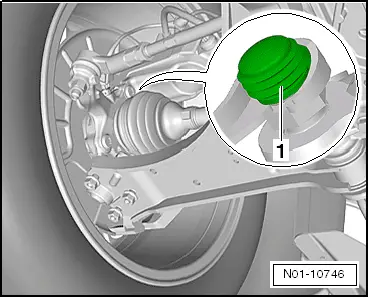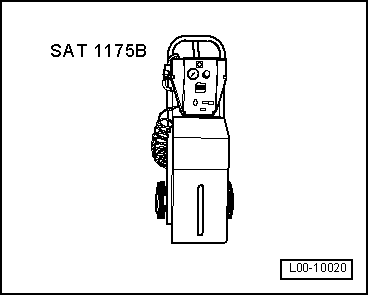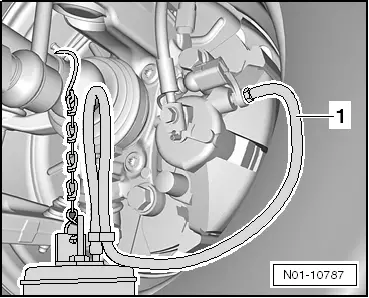| –
| Remove the hose of the collector bottle -SAT 1175B/1- and at the same time place a protective cap -1- on a bleeding bolt of the brake calliper / brake cylinder. |
| –
| Tighten the bleeding bolts to the specified tightening torque. See → Chapter |

Note | Fill up the brake liquid container only to the -MAX- mark. |
| –
| Check the liquid level in the brake liquid container and fill the liquid when necessary. |
| –
| When the engine is running, check the pedal travel and the resistance of the brake pedal. |
| l
| If the brake pedal shows excessive pedal travel or an abnormal resistance: check if leaks are present in the brake system and perform the bleeding procedure according to the description in → Chapter. |
| l
| If the pedal travel and the resistance of the brake pedal are normal: carry out a test run of the vehicle and start at least one ABS regulating cycle. |
|
|

|

 Note
Note

 Note
Note

 Note
Note

 Note
Note